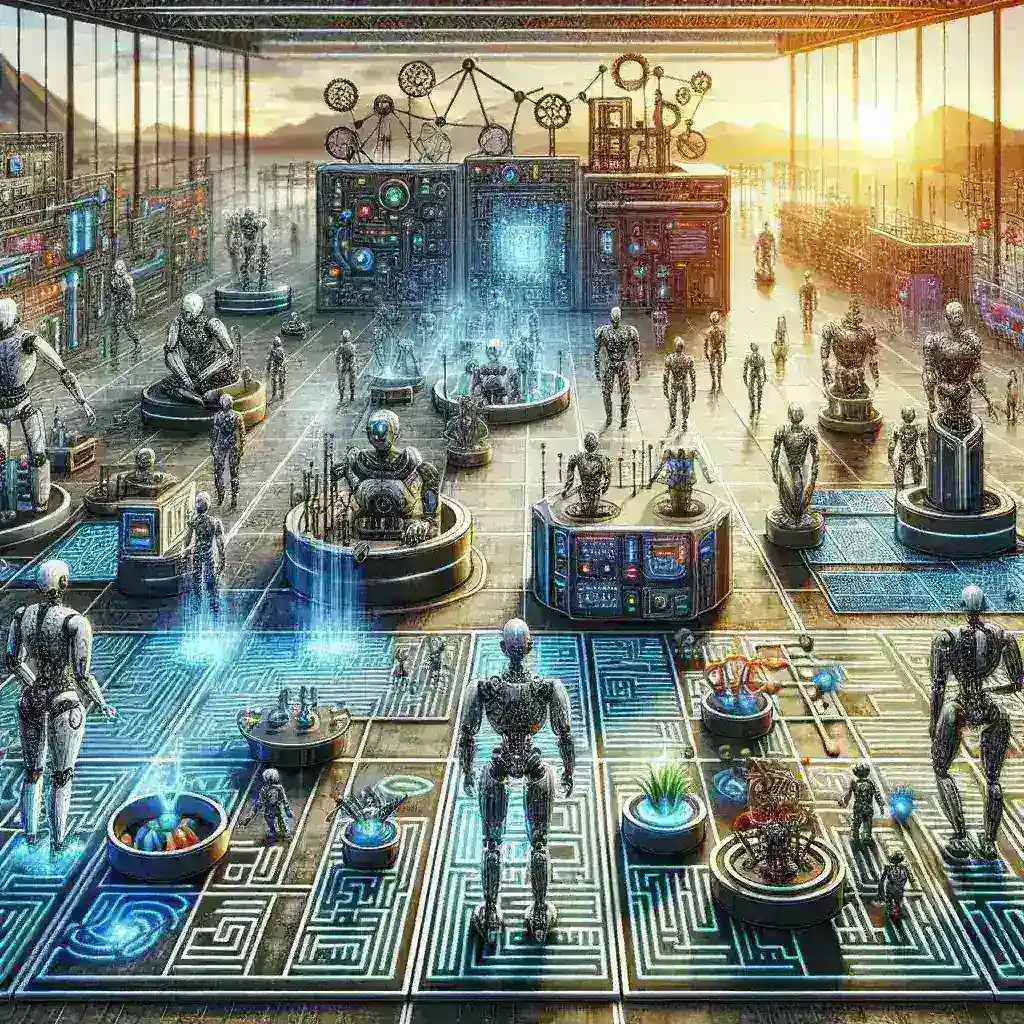Exploring Robotics Reinforcement Learning Applications: Transforming the Future of Automation
Introduction
Robotics and artificial intelligence (AI) have become integral to various industries, driving innovation and enhancing productivity. Among the cutting-edge advancements in this domain is reinforcement learning (RL), a branch of machine learning that teaches agents to make decisions through trial and error. This article delves into the applications of robotics reinforcement learning, its significance, potential challenges, and future outlook.
Understanding Reinforcement Learning
Reinforcement learning is a learning paradigm where an agent interacts with its environment, makes decisions, and learns from the outcomes. The agent receives rewards or penalties based on its actions, allowing it to refine its strategies over time. This type of learning mimics how humans and animals learn from their experiences, making it especially relevant for robotics.
Key Concepts in Reinforcement Learning
- Agent: The entity that makes decisions and takes actions.
- Environment: The space in which the agent operates.
- Actions: The choices available to the agent.
- Rewards: Feedback received from the environment after an action is taken.
- Policy: A strategy that the agent employs to determine its actions.
Applications of Robotics Reinforcement Learning
Robotics reinforcement learning has found diverse applications across various sectors. Below are some notable fields where it is making a significant impact:
1. Industrial Automation
In manufacturing, robots equipped with reinforcement learning algorithms can optimize their operations. For instance, these robots can improve assembly line efficiency by learning the most effective ways to handle components, reducing waste and increasing production rates.
2. Autonomous Vehicles
Reinforcement learning plays a crucial role in the development of autonomous vehicles. By simulating various driving scenarios, these vehicles learn to navigate complex environments, make split-second decisions, and adapt to changing conditions. This capability enhances safety and reduces the likelihood of accidents.
3. Robotics in Healthcare
In healthcare, robots trained using reinforcement learning can assist in surgeries, rehabilitation, and patient monitoring. For example, surgical robots can learn from previous procedures, improving precision and outcomes over time. Reinforcement learning enables these robots to adapt to individual patient needs, enhancing the quality of care.
4. Smart Homes
Reinforcement learning can optimize the functionality of smart home devices. For instance, robots can learn users’ preferences for energy usage or home security, adjusting their actions to enhance comfort and safety while minimizing costs.
5. Agriculture
In agriculture, robots equipped with reinforcement learning can enhance crop management. These robots can learn the optimal times for planting, watering, and harvesting, ensuring maximum yield and resource efficiency.
Benefits of Robotics Reinforcement Learning
The integration of reinforcement learning in robotics offers numerous advantages:
- Improved Efficiency: Robots can continuously improve their performance through learning, leading to increased efficiency in operations.
- Adaptability: Reinforcement learning allows robots to adapt to new tasks and environments without requiring extensive reprogramming.
- Cost-effectiveness: By optimizing processes, reinforcement learning can reduce operational costs and waste.
- Enhanced Decision-making: Robots can make informed decisions based on real-time data, improving overall outcomes.
Challenges in Implementing Reinforcement Learning in Robotics
While the potential of robotics reinforcement learning is immense, several challenges need to be addressed:
1. Data Requirements
Reinforcement learning often requires large amounts of data for effective training. Collecting this data can be time-consuming and resource-intensive.
2. Safety Concerns
Implementing reinforcement learning in robots operating in unpredictable environments raises safety issues. Ensuring that robots make safe decisions is paramount.
3. Computational Complexity
The algorithms used in reinforcement learning can be computationally demanding, necessitating advanced hardware and software capabilities.
4. Transfer Learning
Transferring learned knowledge from one task to another remains a challenge, as robots may struggle to apply skills learned in one context to a different environment.
The Future of Robotics Reinforcement Learning
The future of robotics reinforcement learning is promising, with several trends likely to shape its evolution:
1. Increased Collaboration
As industries continue to integrate AI and robotics, collaboration between humans and robots will increase. Reinforcement learning will enable robots to learn from human feedback, fostering better teamwork.
2. Improved Algorithms
Advancements in algorithms will enhance the efficiency and effectiveness of reinforcement learning, making it more accessible for various applications.
3. Real-time Learning
Future developments may allow robots to learn in real-time, adapting to changes in their environment as they occur.
4. Interdisciplinary Applications
The combination of reinforcement learning with other technologies, such as computer vision and natural language processing, will create new opportunities for robotics in diverse fields.
Conclusion
Robotics reinforcement learning applications are revolutionizing various industries by enhancing efficiency, adaptability, and decision-making. While challenges exist, ongoing research and development promise to unlock the full potential of this technology. As we move forward, the fusion of robotics and reinforcement learning will undoubtedly shape the future of automation, leading to innovations that enhance our daily lives.

